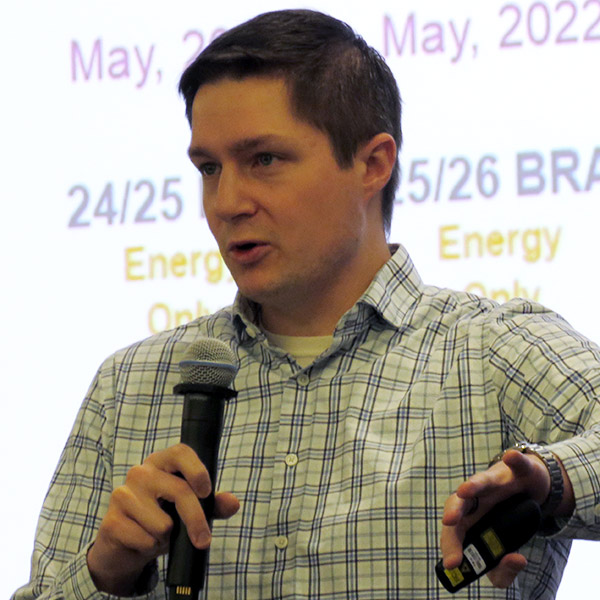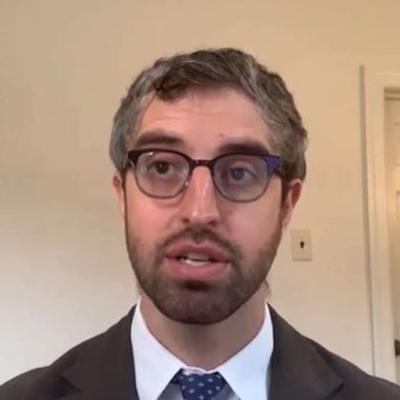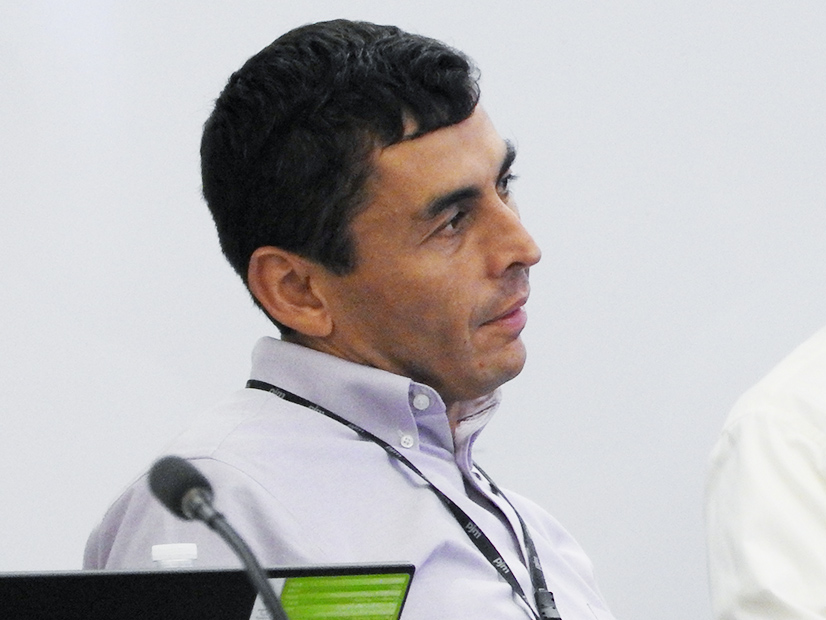PJM presented the specifics of its initial proposal to overhaul the capacity market through the critical issue fast path (CIFP) process on Wednesday, addressing looming resource adequacy concerns brought by the Board of Managers.
Some of the core components include shifting to a new reliability requirement metric, a marginal accreditation framework that models risk for every hour of the year, creating a separate winter accreditation structure and a new model for assessing and valuing generator performance.
The presentation was part of the first stage of the CIFP process, in which PJM and stakeholders are introducing their packages. Several stakeholder proposals are also being carried over from the capacity market discussions previously held by the Resource Adequacy Senior Task Force (RASTF), which is being converted to the CIFP process. (See PJM, Stakeholders Present Initial Capacity Market Proposals to RASTF.)
Shift to More Detailed Reliability Requirement
 Patrick Bruno, PJM | © RTO Insider LLC
Patrick Bruno, PJM | © RTO Insider LLCThe PJM proposal would switch the reliability requirement metric to be based on expected unserved load (EUE), a measure of how many customers are without power and for how long, from the current loss-of-load expectation (LOLE), a count of the frequency of outages. Taking the scale of outages into account will be increasingly important as the risk of extreme weather grows, PJM’s Patrick Bruno said.
The threshold for an EUE value to meet the reliability requirement would be based on an equivalent to the 1-in-10-year LOLE standard for the RTO and a corresponding equivalent for locational deliverability areas (LDAs), which have a stricter reliability requirement.
Vistra’s Erik Heinle questioned if EUE could include additional parameters beyond a specified number of unserved hours, such as capping the length of a potential outage. Bruno said adding components would increase complexity, but that it’s a conversation worth having.
The proposed risk modeling would exclude imports from PJM’s analysis of the resources needed to meet its reliability metric, which PJM’s Patricio Rocha-Garrido said reflects a belief that surrounding RTOs are likely to be experiencing many of the same reliability challenges.
“There’s a degree of uncertainty around all these inputs for our neighbors … and that’s to a large extent driving our initial proposal on not counting on emergency imports,” he said.
James Wilson, a consultant for state consumer advocates, said excluding imports from other regions reflects a deterministic approach to resource adequacy analysis, inconsistent with PJM’s probabilistic approach.
Susan Bruce, representing the PJM Industrial Customer Coalition, said the capacity benefit margin, which is a value of the ties between regions, has long been a central component in determining resource adequacy. Eliminating its consideration would notably increase the amount of generation required, she said.
New Accreditation Framework
The marginal accreditation framework would model risk for each hour of the year under thousands of conditions and credit individual resources for their contribution to mitigating those risks. Resources’ unforced capacity (UCAP) contribution would be determined by taking their expected performance over the course of a given month multiplied by the risk expected in that period. Those monthly values would be averaged to reach an annual UCAP for the generator.
 Walter Graf, PJM | FERC
Walter Graf, PJM | FERCPJM’s Walter Graf said the new model would allow for an evaluation of the value resources provided compared to a “perfect resource” available all year. PJM is aware that the proposed method of calculating annual UCAP would not reflect the monthly differences in output, Graf said.
“We at no point forget that this resource doesn’t contribute very much during certain months,” he said.
PJM also suggested implementing a stricter winterization standard, which resources would have to reach to avoid a zero accreditation value for those months. The winterization requirements PJM supports would use stricter alternatives the ISO/RTO Council proposed to the NERC minimum requirements.
The proposal would create a two-tiered system for setting assessment periods, with differing nonperformance charges. The first tier would operate similar to status quo performance assessment intervals, being tied to intervals where there is a real-time reserve shortage and emergency conditions beyond the deployment of pre-emergency demand response.
The second tier would be implemented when there are fewer than 360 tier 1 intervals in a delivery year and would add in the tightest real-time operating reserve intervals to reach 360 intervals for the year. The methodology would ensure that there are a minimum number of assessment periods each year to provide sufficient data to evaluate generator performance.
Penalty charges for tier 1 would maintain the current calculation based on net cost of new entry (CONE), while tier 2 would use the weighted average resource clearing price. The annual stop loss would be based on annual capacity revenues rather than net CONE, with the cap at 1.5 times a resource’s annual capacity revenues for tier 1 intervals. Tier 2 would be capped at annual capacity revenues.
The proposal would also seek to base the performance expectations underlying the penalties on generators’ monthly ratings under the marginal framework.
All capacity resources, including intermittents, would be subject to penalties under the proposal, even under weather conditions when wind or solar are not able to produce power. Ken Foladare of Tangibl Group said that provision would likely lead to those resources viewing the capacity market as being too risky to participate in.
Jason Barker of Vitol said he suspects that the tier 2 penalty structure could suppress energy prices and lead to increased uplift payments.
Longer Weather Lookback
The proposal would extend the lookback period for the weather history it incorporates in its reliability modeling to at least 50 years. Several stakeholders questioned whether a longer lookback period could lead to a less accurate forecast of the expected increase in severe weather in future years.
Steve Lieberman of American Municipal Power said a longer lookback period could be helpful with providing more data on how forced outage rates vary with temperature. But he said expanding historical data for evaluating risk could undervalue current trends.
“Is what you’re getting of value? … What you’re saying here, it sounds good, but will the results have any meaning to what is on the system today and tomorrow?” he asked.
Wilson said many utilities have been moving in the opposite direction and shrinking their historical weather history to recognize that recent weather is likely to better resemble future expectations.
Next Steps in CIFP Process
The second phase of the CIFP process, which will run April 19 through May, will have stakeholders taking a more detailed look at all proposals. Stakeholders and PJM will work to finalize packages through stage three in June and July, followed by a final CIFP meeting scheduled for Aug. 23, where the Members Committee will vote on each proposal.
PJM’s Dave Anders stressed that the second and third stage are fluid and proposals can continue to be made or significantly altered throughout both phases. Stakeholders raised concerns that the report PJM plans to release on the December 2022 winter storm will not be available until the end of the process. (See “PJM Gives Update on December Winter Storm Report,” PJM MRC/MC Briefs: March. 22, 2023)
“We’re going to have half of our CIFP meetings, all of stage one and all of stage two, … that will be concluded before we have that report. And I think that report could very well be a significant driver” to the proposals, Lieberman said. “With this piece of the puzzle not available to us, I question whether this schedule really works or if we should reconsider how we get to Oct. 1.”
PJM’s Adam Keech said many of the major findings in the report will be presented during a “lessons learned” presentation being planned for the CIFP meeting on May 17. Anders stated that if additional discussion is needed to incorporate the study’s findings, more meetings can be added.


